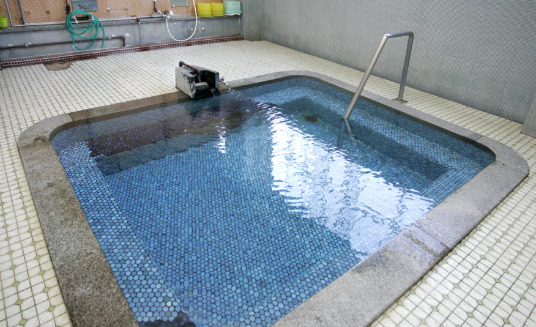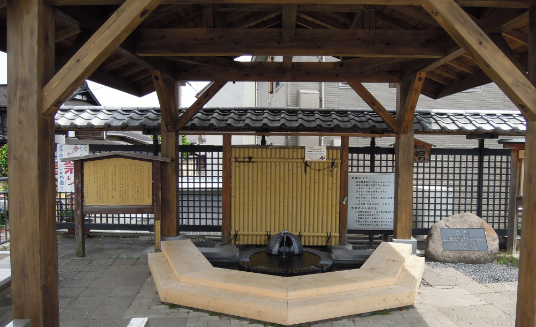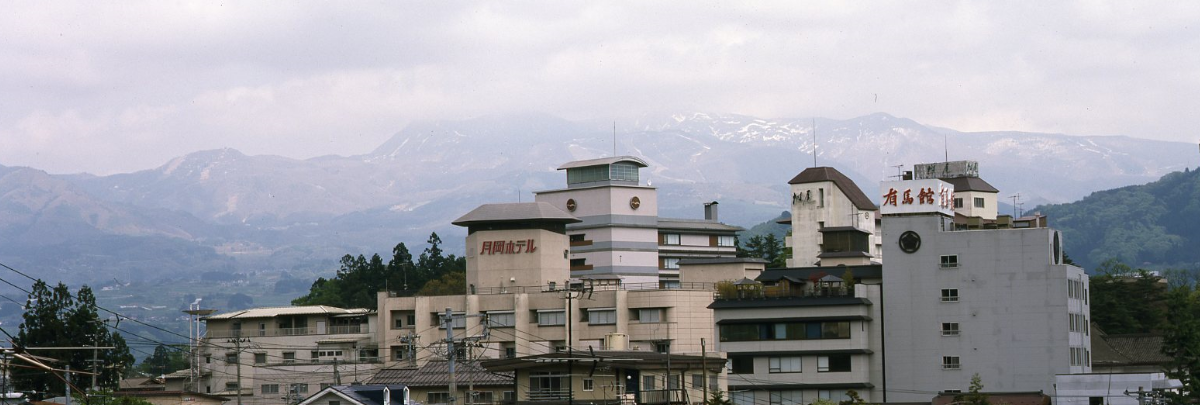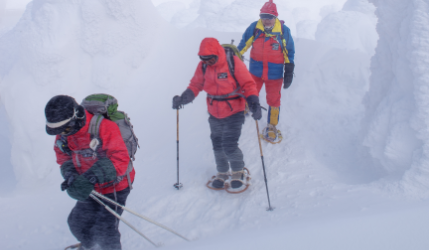Kaminoyama Onsen
Yamagata Prefecture
Kaminoyama Onsen is a historical hot spring discovered around 560 years ago and is listed as one of the Ou San Rakukyo (Top Three Onsen Resorts of Ou) alongside Higashiyama Onsen in Aizu and Yunohama Onsen in Tsuruoka. In addition, it is one of the unique hot spring districts in the country, having flourished as a combination of a castle town, a post town, and an onsen all in one location from long ago. Kaminoyama Onsen is comprised of seven hot spring locations grouped into two districts that differ in regional character: the Shinyu/Yumachi/Tokamachi Districts retain the former appearance of the old castle and post towns, while the Hayama/Kawasaki/Takamatsu/Kanakame Districts are nestled on a hill with a panoramic view of the Zao mountain range. Kaminoyama Onsen is situated at the heart of the southern Tohoku Region and is conveniently accessible from all parts of Japan. From Tokyo, Kaminoyama Onsen Station can be reached in approximately 2 hours and 30 minutes via the Yamagata Shinkansen (bullet train). Furthermore, Kaminoyama City aims to become a long-stay onsen health resort in the style of the German health spa called kurort; as such, a variety of walking courses are available. Visitors can delight in the hot spring water gentle enough for infants, as well as enjoy a health-conscious hot spring vacation while immersing in nature through kurort walks.
History of Kaminoyama Onsen
It is believed that the hot spring’s origin dates back to 1458 when a traveling monk by the name of Gesshu noticed a crane soaking its leg in the marshy hot springs and flying off after the wound was healed. The “Tsuru no Yasumi Ishi (Resting Rock of the Crane)” in the Yumachi area is said to be the very rock on which the legendary crane rested and marks the birthplace of Kaminoyama Onsen. The castle town began to take shape around 1535, and it was at this time that the area came to be known as Yu no Koji. Even though the hot springs originated in the Yumachi area where there were seven or eight hot spring inns, the farmers and commoners at the time could not get in a hot spring easily. It was not until a public bathhouse, Shimo Oyu, was opened in 1265 during the Edo Period that the general people were able to use the hot springs. Thereafter, the town prospered as a post town for travelers on Sankin Kotai (alternate residence duty for feudal lords) and Dewa Sanzan Mairi (Pilgrimage to the Three Mountains of Dewa). In the Taisho Period, hot springs were discovered in the Shinyu area, leading to large hotels lining up the streets. The Showa Period was met with the discovery of hot springs in the Hayama area, consequently dividing the hot spring town into two districts that make up the present-day Kaminoyama Onsen Resort.

Tsuru no Yasumi Ishi (Resting Rock of the Crane)
Public Bathhouse, Shimo Oyu
Legend Engraved on Stone Monument
The Characteristics and Spring Quality of Kaminoyama Onsen
The hot springs of Kaminoyama Hot Spring are mild, colorless, and slightly alkaline in nature, making the water feel silky against the skin. The gentle water is safe for infants to bathe in. The hot springs have excellent moisturizing effects, and they have a high concentration of silicic acid which is known to be beneficial for the skin. The hot spring water will leave the skin feeling supple and hydrated, which is why it is sometimes called the “Bijin no Yu (Hot Spring of Beauty).” One of the time-honored traditions of the hot spring culture in which Kaminoyama Onsen prides itself is the public bathhouse tour. There are five public bathhouses open to all. For an entrance fee of 150 yen across the board, onsen-goers can interact with the locals while soaking in the hot springs. In addition, Kaminoyama Onsen boasts five unique footbaths to be enjoyed free of charge.

The First Footbath
Public Bathhouse, Shimo Oyu
- Spring quality
- Sodium, calcium-chloride, sulfate springs (calcium sulfate springs) (Hypotonic, weak alkaline, high-temperature spring)
- Effects
- Beautiful skin, lacerations, burns, chronic skin disease, physical weakness in children, gynecological diseases, sensitivity to cold, arteriosclerosis, nerve pain, muscle pain, joint pain, stiff shoulders, motor paralysis, bruises, sprains, chronic gastrointestinal disorders, recuperation period, fatigue recovery, promoting overall health, etc.
Public Bathhouses

Shimo Oyu Public Bathhouse

Shincho Tsuru no Yu Public Bathhouse

Shinyu Sawa no Yu Public Bathhouse

Futsuka-machi Public Bathhouse

Hayama Public Bathhouse Kotobuki-so
Footbaths

Footbath of Shinyu

Footbath of Kaminoyama Castle

Footbath of Yumachi

Footbath of Maekawa

Footbath of Hayama
How to bathe in Kaminoyama Hot Spring
The best bathing method
- Thoroughly pour the hot spring water over the body before bathing the lower half of the body and gradually extend the limbs.
- Use the edge of the bathtub as a headrest and position the body so that it is floating.
- Move the limbs frequently when submerged, and avoid bathing for extended periods of time.
- Drink plenty of warm water, tea, or other drinks after bathing.
- If the water temperature is high, bathe for 3 minutes, then rest for 5 minutes out of the bathtub. Repeat this 3 times.
Model Plans for Staying at Kaminoyama Onsen
Kurort

Kurort is a German term used to describe health resorts and curative locations. At German kurorts, patients are prescribed with an exercise therapy called “climatic terrain therapy.” Medical insurance is also applicable. Climatic terrain therapy is a walking technique to maintain a cool body surface temperature while walking the hilly terrain through the forests and mountains, thereby improving endurance and enhancing the effects of the exercise. It is utilized for rehabilitating myocardial infarction and angina pectoris, treating hypertension, preventing lifestyle diseases, and alleviating seasonal mood disorders. Climatic terrain therapy requires walking courses that extend from the plains to the highlands through the various biomes of the hilly fields and mountains. There are foothill villages and the Zao Kogen Bodaira situated at over 1,000m above sea level close to Kaminoyama, making it a prime location for kurort. Presently, Kaminoyama commands eight Healthy Kurort Walking Courses catering to different exercise levels in five locations. They are the only courses in Japan to have been certified by the University of Munich in Germany. Guided walks are conducted on a daily basis. Kaminoyama Onsen which is known as the hot spring of beauty, the health-promoting walks designed with the application of the topography and climate based on scientific evidence, and the wholesome cuisines inspired by the Yamagata food culture masterfully prepared with fresh, seasonal, local ingredients to satisfy the appetite while also controlling the calorie intake. These assets provide the visitors with a hot spring stay that is both healthy and enjoyable at the same time.
Specialized Courses Certified by the University of Munich, Germany
Foothill Village Course (Elevation: 180m and above)

- Nishiyama Course (Length: 3.1km, Elevation difference: 110m, Duration: 2hrs) A popular and easy walking course with many viewpoints along the way. Located near the hot spring district, the course is a casual walk with many panoramic viewpoints of the Zao mountain range and the townscape. It is also a favorite walking course among the locals.
- Hayama Course (Length: 2.6km, Elevation difference: 129m, Duration: 1hr 30min) Enjoy the view from the observation deck and the post-walk footbath. The course will pass through a certified lover’s sancturay, Mt. Hanasaki Observation Deck. At the end of the walk, a footbath is available near the starting point to soak away the fatigue. In addition, the course offers scenic views of the cherry blossoms, maple foliage, and hydrangeas during their prime seasons of the year.
- Mt. Sankichi [Halfway] Course (Length: 1.8km, Elevation difference: 150m, Duration: 1hr 30min) Walk the therapeutic forest course in the comfort of the sunlight filtering in through the woods. Enjoy walking through the forest of Japanese red pine and cherry and admire the beauty of the delicate flowers such as wild ginger, and the Ainsliaea acerifolia. The course provides a therapeutic forest walk while feeling the sunlight filtering in through the trees.
- Mt. Sankichi [Summit] Course (Length: 2.7km, Elevation difference: 273m, Duration: 2hrs) A full-scale course through boulder fields created by sedimentary rocks and inhabited by rare subalpine plants. Ascending the steep hill further up from where the path forks along the halfway, the path will reveal a boulder field created by sedimentary rocks on a stretch of sheer slopes where subalpine flora can be observed blooming with vitality in an environment in which no other vegetation and animals can thrive.
- Mt. Kokuzo [Summit] Course (Length: 5.1km, Elevation difference: 170m, Duration: 2hrs 30min) A unique course featuring various historic sites and an extremely rare tree, the only one of its kind in the world. Tread the paths of history while exploring the various historic sites like the Takuan Barrier and Takadate Castle ruins. Other attractions include the native Jindai-sugi (sacred Japanese cedar) and the Dewanohagoromo Nanakamado (Sorbus rikuchuensis Makino), an extremely rare tree, believed to be the only species of its kind in the world.
- Mt. Kokuzo [North Weir] Course (Length: 3.7km, Elevation difference: 86m, Duration: 2hrs) A course with little elevation change recommended for those who are unsure of their physical strength. Instead of climbing up Mt. Kokuzo along the Summit Course, a path will lead towards the Suehiro Waterfall with little elevation change. The multi-colored petals of the yellow azalea, fringed iris, and Asian fawnlily can also be observed when in season.
Semi-High Altitude Course (Elevation: 1000m and above)
- Zao Kogen Bodaira Course (Length: 3.6km, Elevation difference: 190m, Duration: 2hrs) A relaxing course of walking and reclining on the fluffy grass amidst the sunlight passing through the Mongolian oak trees. Along the course is the Oshizu no Mori (Forest of Pristine Water), a location considered to withhold strong spiritual energy and where visitors can drink its natural spring water. To add to the charm, the autumn foliage and the winter trek through rime-covered trees are also delightful.
- Oshizu/Juhyo-daira Course (Length: 3.2km, Elevation difference: 310m, Duration: 2hrs) A walking course through the remnants of the Zao Shugen where strong spiritual energy prevails. The walk will cover the Oshizu no Mori where the worshippers of Mt. Zao once began their devotional visit, and where the vestiges of the Zao Shusgen (mountain asceticism) can be observed in the 33 Kannon statues of Saigoku and other groups of stone Buddhist statues as well as the image of the deity, Zao Gongen. It is a diversified course of forests and grasslands.
Kaminoyama Onsen Stay Suggested Itineraries
A. 4-day Kaminoyama Onsen Experience and Healthy & Hot Spring Kurort
Season: Spring, Summer and Fall
- Haneda Airport > (Airplane) > Shonai Airport > (Car / Rental Car) > Lunch at Mt. Haguro Sanrojo Saikan (Shojin Ryori Restaurant) > (Car / Rental Car) > Visit Dewa Sanzan Shrine > (Car / Rental Car) > Kaminoyama Onsen (Dinner < Healthy Meal Set or Kurort Menu>, Stay Overnight)
- Kaminoyama Early Morning Kurort…Kaminoyama Onsen (Breakfast) > (Car / Rental Car) > Risshakuji Temple > (Car / Rental Car) > Lunch > (Car / Rental Car) > Kurort Experience > (Car / Rental Car) > Kaminoyama Onsen (Dinner < Healthy Meal Set or Kurort Menu>, Stay Overnight)
- Kaminoyama Early Morning Kurort…Kaminoyama Onsen (Breakfast) > (Car / Rental Car) > Zao Trekking (Guided 6-Hour Trekking Tour < Including Lunch (July: Trekking in Komakusa/ August: Trekking around a Beech Forest, Pond, and Lake )) > (Car / Rental Car) > Kaminoyama Onsen (Dinner < Healthy Meal Set or Kurort Menu>, Stay Overnight)
- Kaminoyama Onsen (Breakfast) > (Car / Rental Car) > Climb Mt. Gassan (Via the Mt. Yudono Course, includes a lunch bento box) > (Car / Rental Car) > Michinoeki-Shonai (Roadside Station) > (Car / Rental Car) > Shonai Airport > (Airplane) > Haneda Airport
Kaminoyama Onsen Stay Suggested Itineraries
B. 4-day Revitalizing Kaminoyama Onsen Experience and Shugendo / Yamabushi Practice (Mountain Religion)
Spring, Summer and Fall
- Haneda Airport > (Airplane) > Shonai Airport > (Car / Rental Car) > Mt. Haguro Sanrojo Saikan (Shojin Ryori Restaurant) > (Car / Rental Car) > Visit Dewa Sanzan Shrine > (Car / Rental Car) > Kaminoyama Onsen (Dinner < Healthy Meal Set or Kurort Menu>, Stay Overnight)
- Kaminoyama Early Morning Kurort…Kaminoyama Onsen (Breakfast) > (Car / Rental Car) > Visit Hayashizaki Iai Shrine / Iaido Experience (type of martial arts) > (Car / Rental Car) > Lunch at Genghis Khan Hitsuji-ya (Japanese grilled mutton cuisine) (In Murayama City) > (Car / Rental Car) > Boat Tour of the 3 Perilous Spots of the Mogami River > (Car / Rental Car) > Kaminoyama Onsen (Dinner < Healthy Meal Set or Kurort Menu>, Stay Overnight)
- Kaminoyama Early Morning Kurort…Kaminoyama Onsen (Breakfast) > (Car / Rental Car) > Risshakuji Temple > (Car / Rental Car) > Lunch > (Car / Rental Car) > Zao Ropeway / Zao Walk > (Car / Rental Car) > Kaminoyama Onsen (Dinner < Healthy Meal Set or Kurort Menu>, Stay Overnight)
- Kaminoyama Onsen (Breakfast) > (Car / Rental Car) > Mt. Yudono Yomigaeri Trekking (Includes a visit to Mt. Yudono Shrine and a lunch bento box) > (Car / Rental Car) > Michinoeki-Shonai (Roadside Station) > (Car / Rental Car) > Shonai Airport > (Airplane) > Haneda Airport
Kaminoyama Onsen Stay Suggested Itineraries
C.4-day Kaminoyama Onsen and Snow Region Lifestyle Experience in Yamagata (Incl. making Japanese Sake, and Imoni stew, as well as a JapowExperience)
Season: Winter
- Tokyo Station > (Shinkansen) > Sendai Station > (Car / Rental Car) > Lunch / Interaction with the Locals (Experience Kneading Soba Dough or Cooking Imoni Stew) > (Car / Rental Car) > Snow Tubing > (Car / Rental Car) >Kaminoyama Onsen (Dinner < Healthy Meal Set or Kurort Menu>, Stay Overnight)
- Kaminoyama Early Morning Kurort…Kaminoyama Onsen (Breakfast) > (Car / Rental Car) > Boat Tour of the 3 Perilous Spots of the Mogami River > (Car / Rental Car) > Lunch at Genghis Khan Hitsuji-ya (Japanese grilled mutton cuisine) (In Murayama City) > (Car / Rental Car) > Dewazakura Sake Brewery (Sakagura Tourism) > (Car / Rental Car) > Kaminoyama Onsen (Dinner < Healthy Meal Set or Kurort Menu>, Stay Overnight)
- Kaminoyama Early Morning Kurort…Kaminoyama Onsen (Breakfast) > (Car / Rental Car) > Zao / Snowshoes and skiing (includes lunch) > (Car / Rental Car) > Kaminoyama Onsen (Dinner < Healthy Meal Set or Kurort Menu>, Stay Overnight)
- Kaminoyama Onsen (Breakfast) > (Car / Rental Car) > Marujyu Soy Sauce Factory Tour > (Car / Rental Car) > Lunch of Yamagata Beef Sukiyaki or Shabu-Shabu > (Car / Rental Car) > Yamagata Station > (Shinkansen) > Tokyo Station

Experience Kneading Soba Dough and Cooking Imoni Stew
Authentic soba dough kneading, as well as cooking Imomi Stew, a local dish from Yamagata. Don’t miss out on this rare opportunity to prepare and taste the flavor of Yamagata.

Snow Tubing
Ride on a rubber tube and slide down the snow.! Enjoy a thrill which cannot be experienced by a sledge.





















